THE SENTENCE for Class 11 ENGLISH
WHAT IS A SENTENCE?
English language has only 1 alphabet. A to Z are 26 letters of the English alphabet.
अंग्रेजी भाषा में केवल 1 वर्णमाला है। A से Z अंग्रेजी वर्णमाला के 26 अक्षर हैं।
WORD
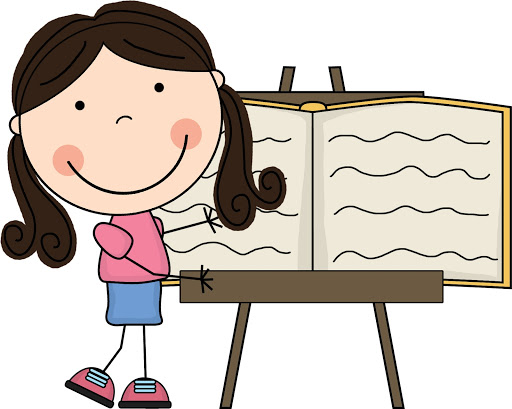
WORD- When letters are put together and it has a meaning, it is called a word.
जब अक्षरों को एक साथ रखा जाता है और इसका एक अर्थ होता है, इसे शब्द कहते हैं।
FOR EXAMPLE:
I am a boy.
We have used the letters B-O-Y which gives us a meaningful word boy.
हमने B-O-Y अक्षरों का उपयोग किया है जो हमें एक शब्द boy (लड़का) देता है।
SENTENCE
A sentence is a group of words that expresses a complete idea.
एक sentence (वाक्य) शब्दों का एक समूह है जो एक पूर्ण विचार व्यक्त करता है।
These are sentences (they express a complete idea):
ये sentences (वाक्य) हैं (वे एक पूर्ण विचार व्यक्त करते हैं):
राम एक पत्र लिख रहा है|
वह कितनी सुंदर है?
क्या आप भूखे हैं?
दरवाज़ा बंद करो।
मुझे नाचना पसंद है।
राधा स्वादिष्ट कुकीज़ बनाती है।
मनोज ने नौकरी छोड़ दी है।
EXAMPLES OF AN INCOMPLETE SENTENCE:
(What did she give me?)
(उसने मुझे क्या दिया?)
(Who will build the house?)
(घर कौन बनाएगा?)
(Is Tara watching the movie now? Was he watching the movie in the past? Or will he be watching the movie in the future?)
(क्या तारा अब फिल्म देख रहा है? क्या वह अतीत में फिल्म देख रहा था? या क्या वह भविष्य में फिल्म देख रहा होगा?)
These are not complete sentences (they don't express a complete idea):
ये complete sentences (पूर्ण वाक्य) नहीं हैं (वे पूर्ण विचार व्यक्त नहीं करते हैं)|
तो हम इन सभी सेन्टेन्सेस में देख सकते है कि हमे सेंटेंस में पूरी बात नहीं बताई गई है हमे सिर्फ आधी बात पता चली तो इसे हम पूर्ण वाक्य नहीं बोल सकते |
A SENTENCE CAN EXPRESS:
Example: You are tall.
Example: Are you tall?
Example: Be tall!
Example: I wish I were taller.
PARTS OF SENTENCE

We all use sentences both in speech and in writing. Basically, a sentence is a grammatical unit which expresses a complete thought. You probably already know that it can be used to communicate a fact or an idea, state a command or a request, ask a question, or express a strong emotion. But what about the parts of a sentence? So, let us understand different parts of a sentence with some examples.
हम रोज़ रोज़ सेंटेंस यानि वाक्य का उपयोग करते है। आप शायद पहले से ही जानते हैं कि इसका उपयोग किसी विचार को बताने के लिए किया जा सकता है, एक आदेश दे सकते है या एक सवाल पूछ सकते हैं, या एक भावना व्यक्त कर सकते हैं। लेकिन एक वाक्य के हिस्सों के बारे में क्या? तो, आइए एक वाक्य के अलग अलग भागों को कुछ उदाहरणों के साथ समझते हैं।
FOR EXAMPLE:
Ram
is writing a letter.SUBJECT- Ram
PREDICATE- is writing a letter
SUBJECT
The subject is the person or thing about which something is being stated.
subject (विषय) वह व्यक्ति या चीज है जिसके बारे में कुछ बताया जा रहा है।
Ram is writing a letter.
Who is a good boy? (अच्छा लड़का कौन है?)
Ram is. ( राम है।)
So Ram is the subject. ( तो राम subject (विषय) है।)
PREDICATE
The predicate is the part of a sentence that tells something about the subject. The predicate always includes a verb. (Predicate is also a verb that means, to state something.)
Predicate (विधेय) एक वाक्य का हिस्सा है जो subject (विषय) के बारे में कुछ बताता है। Predicate (विधेय) में हमेशा एक verb (क्रिया) शामिल होती है। (Predicate भी एक verb (क्रिया) है जिसका अर्थ है, किसी चीज़ का वर्णन करना।)
Ram is writing a letter.
The subject is Ram. (subject (विषय) है राम।)
Now, what about Ram? (अब, राम के बारे में हमे क्या बताया गया है?)
He is writing a letter. (राम एक पत्र लिख रहा है|)
So is writing a letter is a predicate.
'तो एक पत्र लिख रहा है' predicate (विधेय) है।
PARTS OF SUBJECT
QUALIFIER:A qualifier is a word that gives us more information about the subject.
एक क्वालीफायर एक शब्द है जो हमें कर्ता के बारे में अधिक जानकारी देता है।
FOR EXAMPLE:
Five boys.
Here the subject is ‘boys’ and ‘Five’ is the qualifier as it gives us more information about the subject.
यहाँ subject (विषय) ‘boys’ है और ‘Five’ क्वालिफायर है क्योंकि यह हमें subject (विषय)के बारे में अधिक जानकारी देता है।
EXAMPLES OF QUALIFIERS:
A, FEW, MANY, THAT, OLD, BLIND, PRETTY ETC.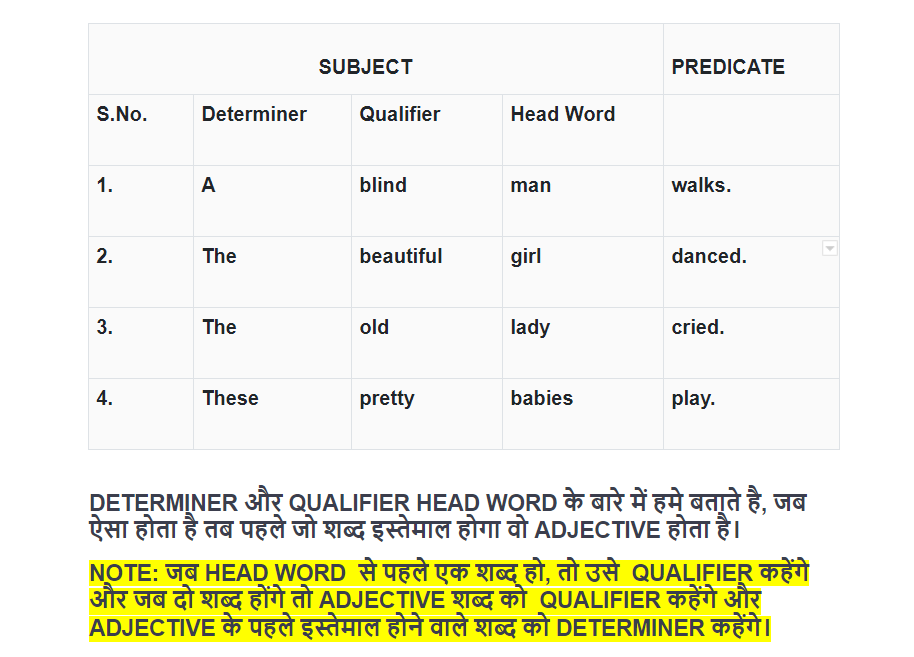
We can understand from the sentences given above that :
Determiners are words such as a, the, my, his, this, some, that etc.
A determiner is a word that is placed just before a noun to give additional information about that noun and that’s why they are also called adjectives.
Determiners (निर्धारक) एक शब्द है जिसे संज्ञा के बारे में अतिरिक्त जानकारी देने के लिए संज्ञा के ठीक पहले रखा जाता है और इसीलिए उन्हें विशेषण भी कहा जाता है। Determiners (निर्धारक) as a, the, my, his, this, some, that, जैसे शब्द हैं। 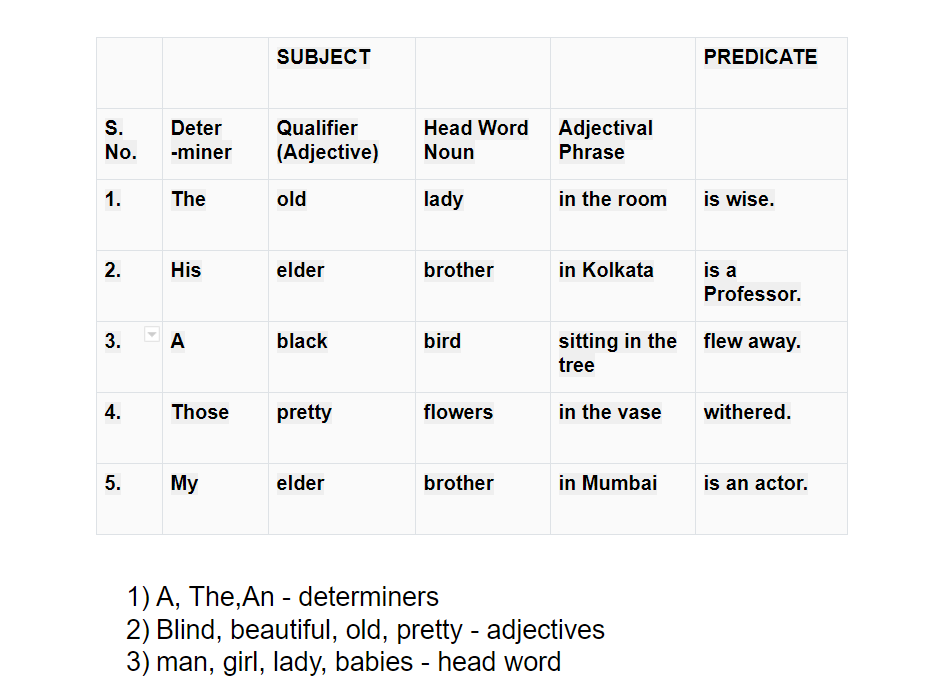
We can understand from the table above that to use head word correctly we have to use determiner, adjective and adjectival phrase correctly. We always use adjectival phrase after head word.
हम ऊपर दिए टेबल से समझ सकते हैं कि सही ढंग से head (हेड) शब्द का उपयोग करने के लिए हमें सही ढंग से determiner (निर्धारणकर्ता), adjective (विशेषण) और adjectival phrase (विशेषण वाक्यांश) का उपयोग करना होगा। हम हमेशा head (हेड) शब्द के बाद adjectival phrase (विशेषण वाक्यांश) का उपयोग करते हैं।
POINTS TO REMEMBER:
याद रखे:
RULE:
We always write the determiner and the qualifier before the subject (head word) and put the adjectival phrase after the subject (head word).
हम हमेशा subject (हेड शब्द) से पहले determiner (निर्धारक) और क्वालिफायर लिखते हैं और सब्जेक्ट (हेड शब्द) के बाद adjectival phrase (विशेषण वाक्यांश) लगाते हैं।
SENTENCE = DETERMINER + ADJECTIVE + NOUN + ADJECTIVAL PHRASE + PREDICATE
Gerund: words ending with ’ing’.
Example: dancing.
Infinitive- words starting with ‘to’.
Example: To know.
Let us look at some examples where gerund and infinitives are used as subjects.
चलो हम कुछ उदाहरणों पर ध्यान देते है जहां subjects (विषयों) के रूप में gerund (जेरुड) और इनफ़िनिटिव का इस्तेमाल किया गया है।
EXAMPLES:
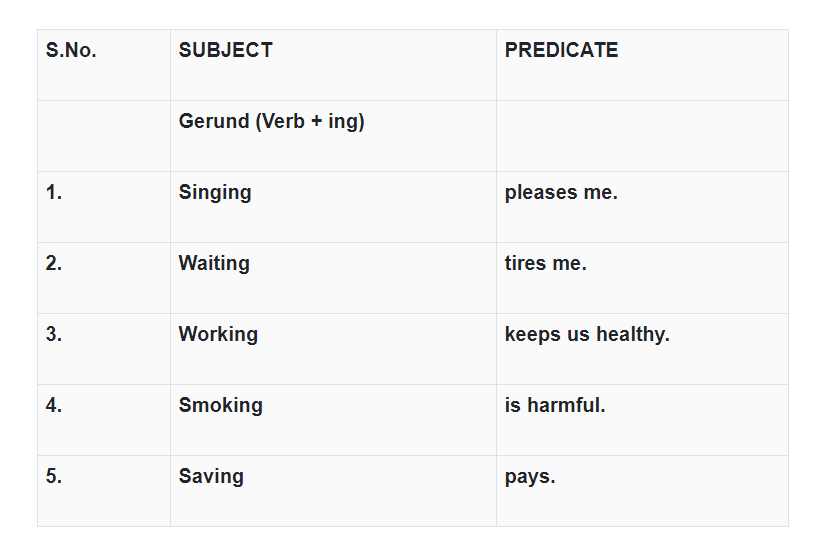
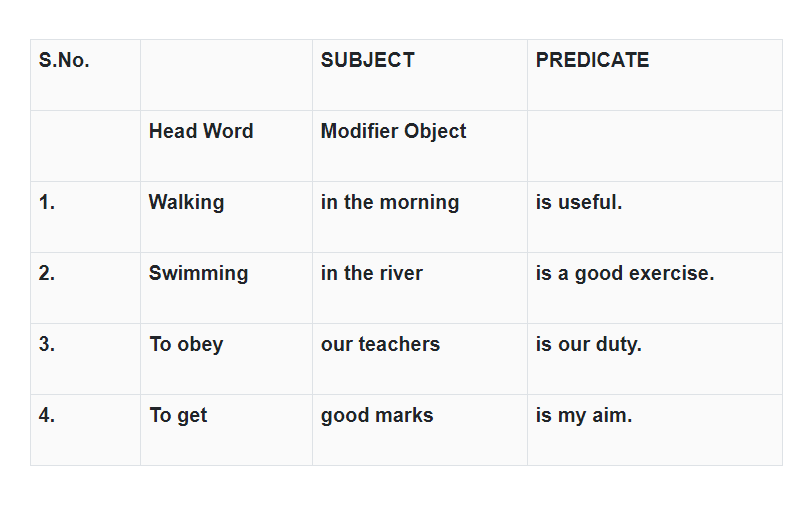
Swimming, walking are gerunds while to get, to obey are infinitives.
In the lines given above, we have used gerunds as subjects.
ऊपर दी गई लाइनों में, हमने subjects (विषयों) के रूप में gerund (जेरण्ड) का उपयोग किया है।
SOME EXAMPLES OF INFINITIVE :

In the lines given above, we have used infinitives as subjects.
ऊपर दी गई लाइनों में, हमने इनफिनिटिव का subjects (विषयों) के रूप में उपयोग किया है।
‘It’ and ‘There’ are also used as subjects, when this is done we use ‘it’ as an impersonal and neutral way and ‘there’ is used as an Introductory Adverb.
‘It’ और ‘There’ का उपयोग subjects (विषयों) के रूप में भी किया जाता है, जब यह किया जाता है तो हम ‘it’ का उपयोग एक ऐसी तरह से होता है जिसमे उसका कोई सीधा सम्बन्ध नहीं होता और ‘there’ का उपयोग एक परिचय कराने वाले Adverb (क्रियाविशेषण) के रूप में किया जाता है।
SOME EXAMPLES :
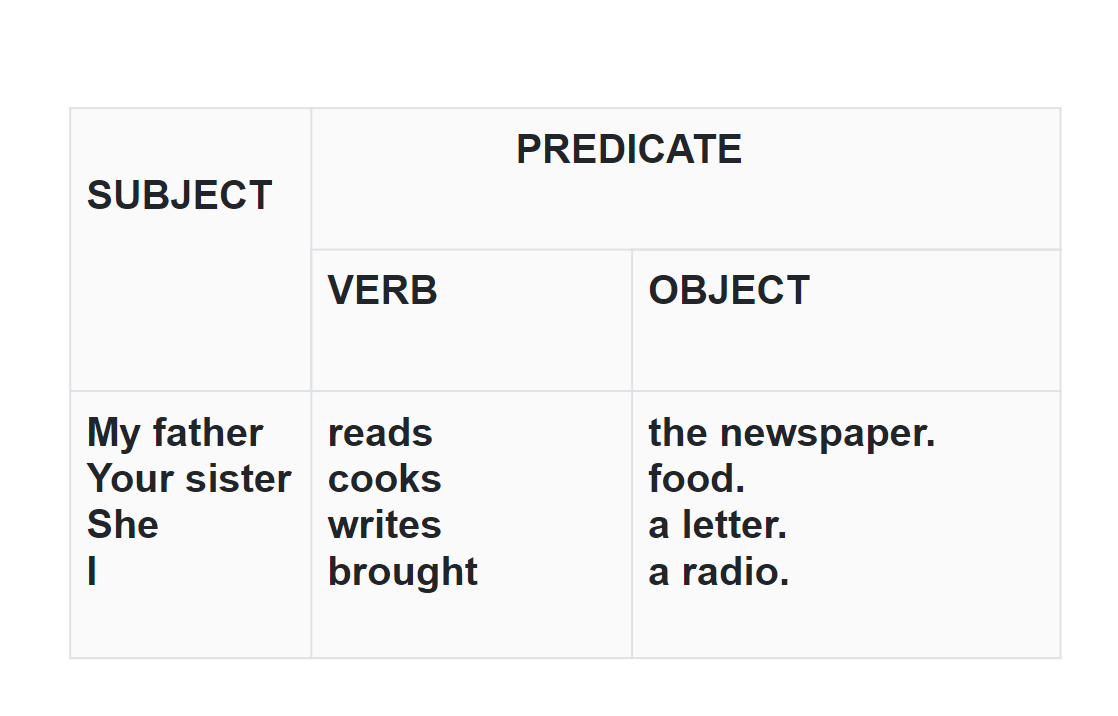
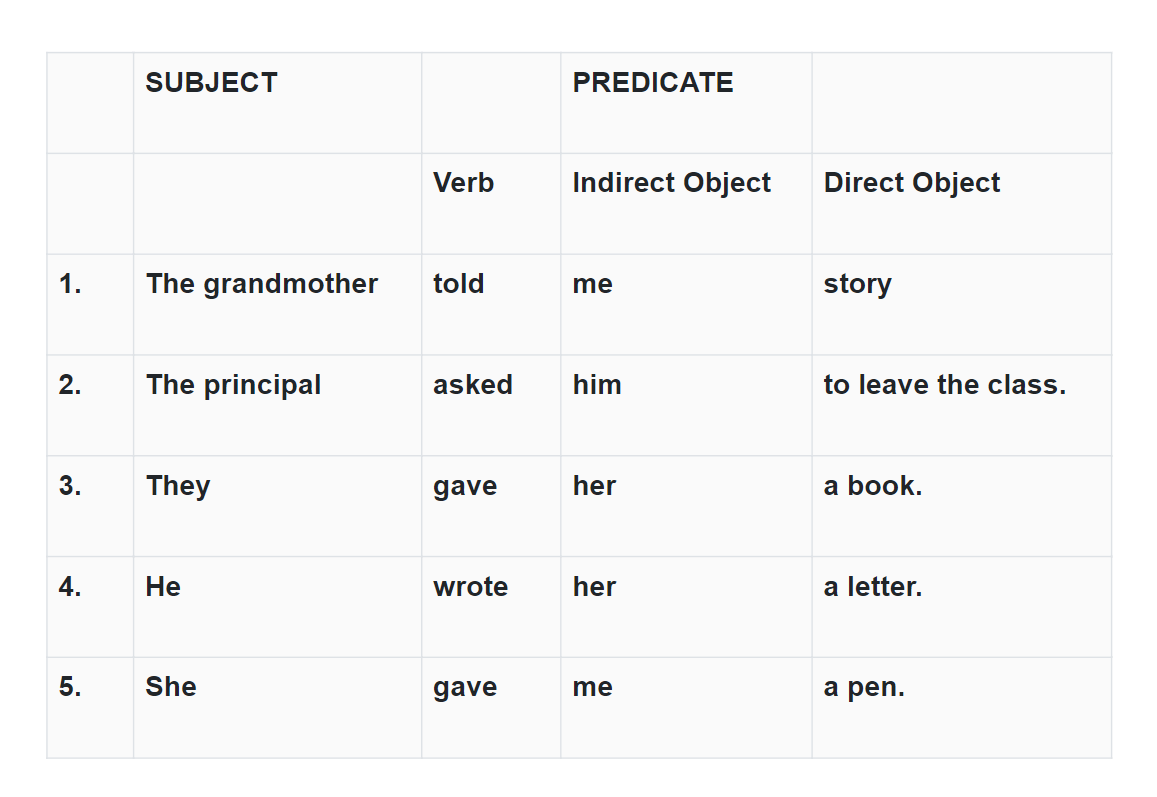
Let us take a look at predicate:
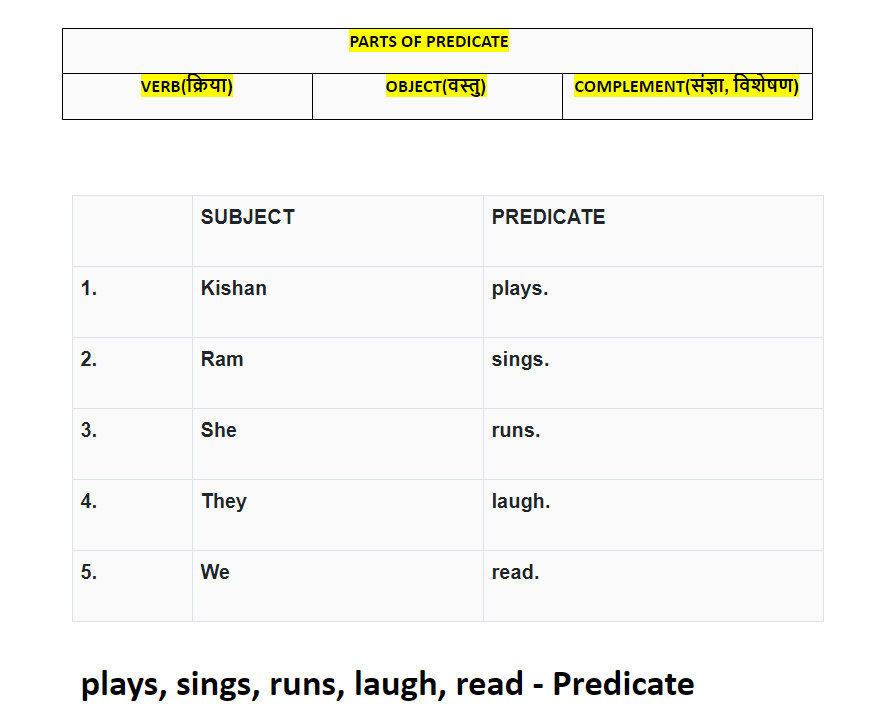
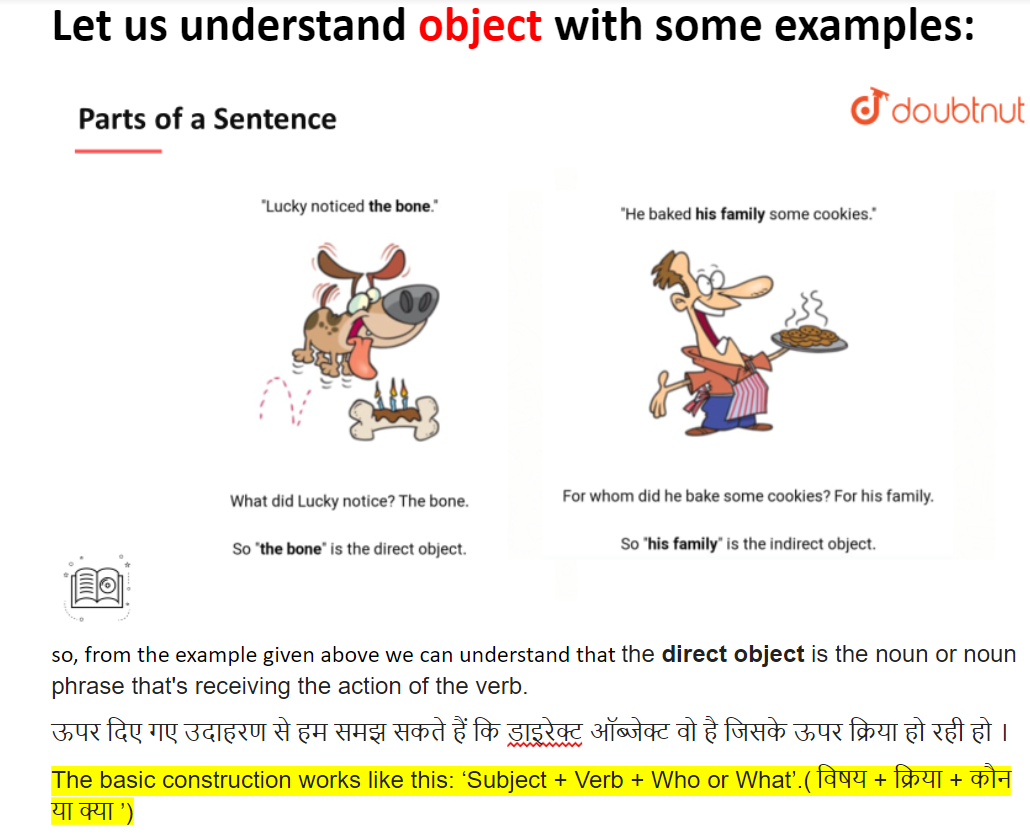
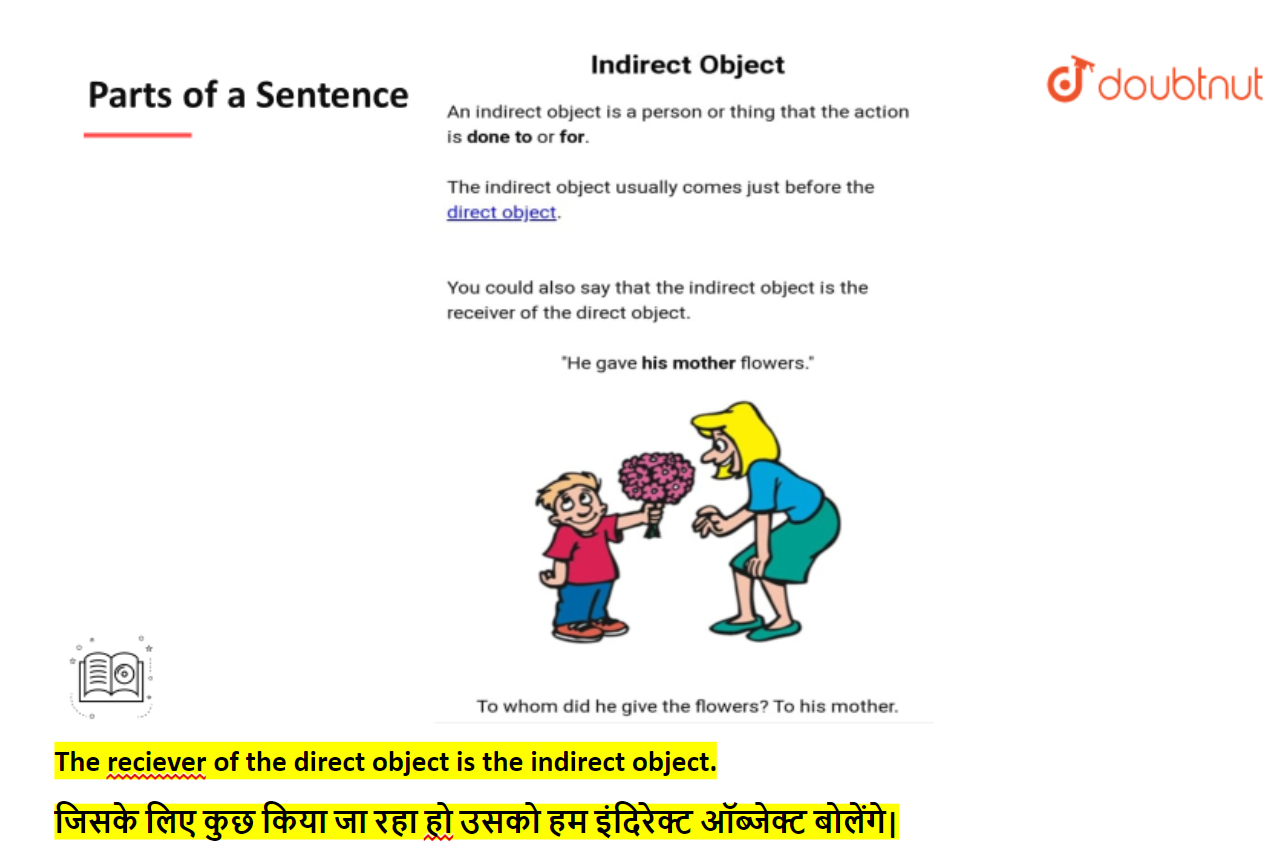

PREDICATE = VERB + INFINITIVE
LET US UNDERSTAND WHAT IS A COMPLEMENT:
Complements modify the subject by describing it further.
Complements (कॉम्प्लिमेंट्स) हमे subject (सब्जेक्ट) के बारे में और ज़ादा जानकारी देते है |
FOR EXAMPLE:
As we can see in the examples above that ‘I’ the subject is described as a ‘teacher’ which gives us more information about the subject so it is a complement.
जैसा कि हम ऊपर दिए गए उदाहरण में देख सकते हैं कि ‘I’ subject (विषय) को एक ‘teacher’ बोल के हमे सब्जेक्ट के बारे में अधिक जानकारी दी गयी है तो यह एक complement (कॉम्प्लीमेंट) है।
NOW LET US LOOK AT SOME MORE EXAMPLES:
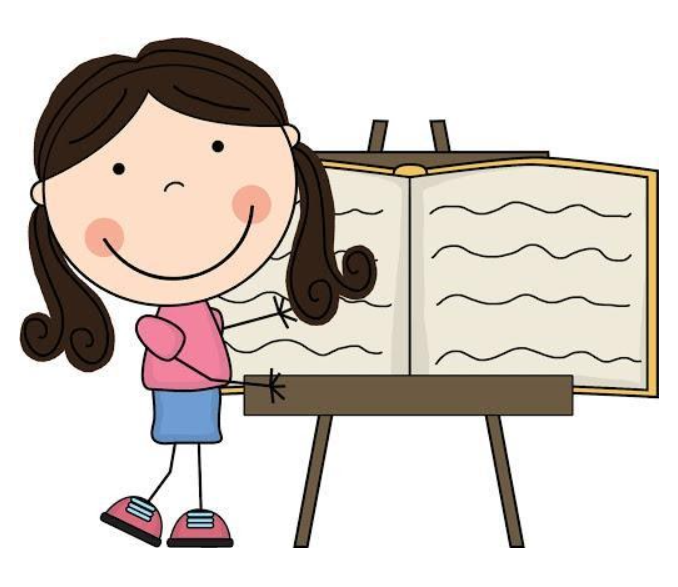
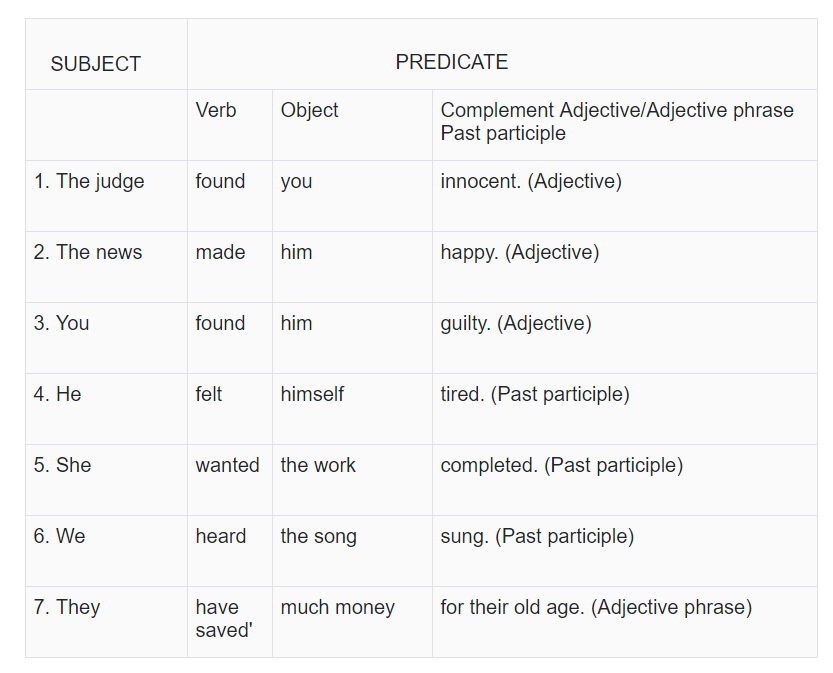
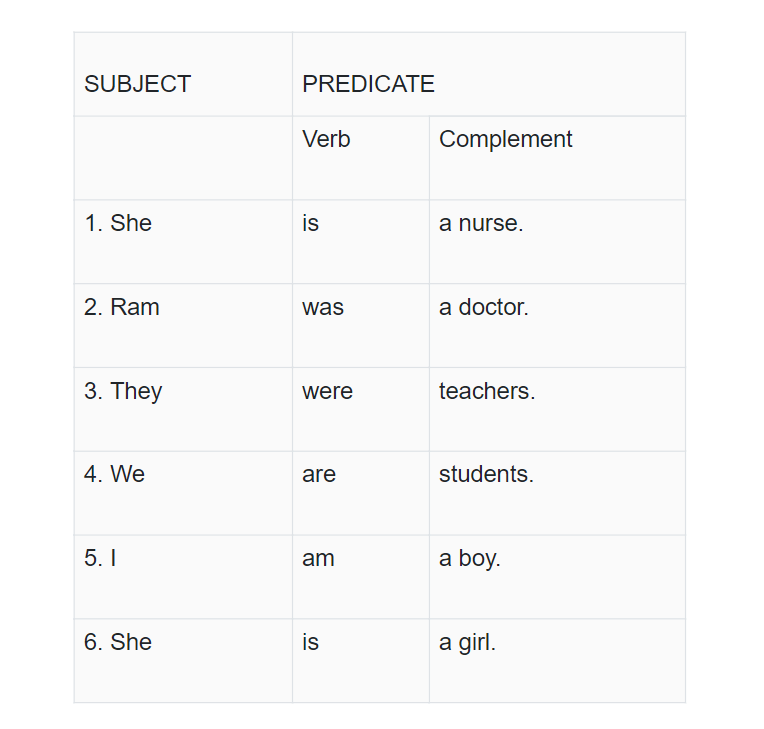
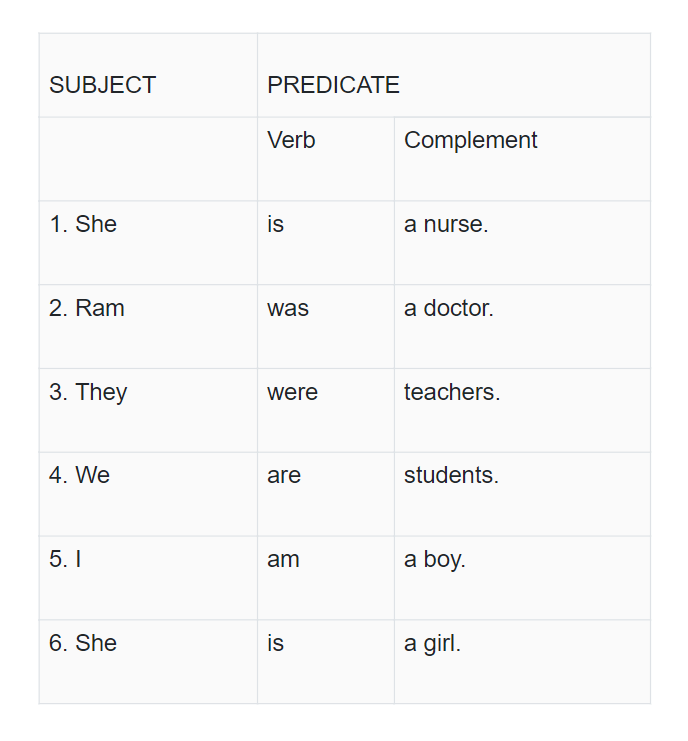
Types Of Sentence(वाक्य के प्रकार)

Assertive sentences-
A sentence that makes a statement or assertion is called an assertive or declarative sentence. Assertive sentences end with a period.
निश्चयवाचक वाक्य- जिस वाक्य से कोई कथन या अभिकथन होता है, उसे निश्चयात्मक या घोषणात्मक वाक्य कहते हैं। मुखर वाक्य एक अवधि के साथ समाप्त होते हैं।
Examples. He goes to school.The Sun is very Hot.
Assertive Sentences are of two types(निश्चयवाचक वाक्य दो प्रकार के होते हैं):
Positive or Affirmative Sentence( सकारात्मक वाक्य)
Negative Sentence(नकारात्मक वाक्य)
1)Positive or Affirmative Sentence- An affirmative word, phrase, or sentence expresses the validity or truth of a basic assertion, while a negative form expresses its falsity.
एक सकारात्मक शब्द, वाक्यांश या वाक्य एक बुनियादी दावे की वैधता या सच्चाई को व्यक्त करता है, जबकि एक नकारात्मक रूप इसकी असत्यता को व्यक्त करता है।
Example- The sun sets in the west, Yes, I can solve this sum.
2)Negative Sentence- A negative sentence is a sentence that states that something is false. In English, we create negative sentences by adding the word 'not' after the auxiliary, or helping, verb.
एक नकारात्मक वाक्य एक वाक्य है जो बताता है कि कुछ गलत है। अंग्रेजी में, हम सहायक, या मदद, क्रिया के बाद 'नहीं' शब्द जोड़कर नकारात्मक वाक्य बनाते हैं।
Example- I Don't like Coffee, I never tell a lie.
Interrogative Sentences-
The kind of sentence that asks a question and uses a question mark.
वह वाक्य जो प्रश्न पूछता है और प्रश्नवाचक चिह्न का प्रयोग करता है|
Example- What is your Name?
Who is she?
Two types of Interrogative Sentences are:
1. Wh-interrogatives- Wh-interrogatives are questions that begin with question words. A question word or interrogative word is a function word whose function is to ask a question.
Examples:Who was the chief guest?
Where should I place this flower vase?
Yes/No interrogatives-
Yes/No interrogatives are questions that can be answered with either a yes or no. These are formed with the help of auxiliary verbs.
Examples:
Do you go to the library daily?
Did you meet your best friend yesterday?
Imperative Sentence-

The sentence which is used to convey a command, a request, or a forbiddance is called an imperative sentence.
जिस वाक्य का प्रयोग आज्ञा, निवेदन या निषेधाज्ञा व्यक्त करने के लिए किया जाता है, अनिवार्य वाक्य कहलाता है।
Example: Bring me a glass of water, Give me a pen, kindly.
Exclamatory Sentences-
An exclamatory sentence makes a statement that conveys strong emotion or excitement.
विस्मयादिबोधक वाक्य एक ऐसा बयान देता है जो मजबूत भावना या उत्तेजना व्यक्त करता है।
Example- How beautiful! How clever he is!
When do we use this and that – these/those?
We use:
this and that in the singular,
these and those in the Plural.
We use this/these to refer to people and things, situations and experiences that are close to the speaker or very close in time. We use that/those to refer to people and things, situations and experiences that are more distant, either in time or physically.
हम इसका उपयोग लोगों और चीजों, स्थितियों और अनुभवों को संदर्भित करने के लिए करते हैं जो स्पीकर के करीब हैं या समय के बहुत करीब हैं। हम उस/उनका उपयोग लोगों और चीजों, स्थितियों और अनुभवों को संदर्भित करने के लिए करते हैं जो अधिक दूर हैं, या तो समय में या शारीरिक रूप से।
This is a great game. (We are watching the game.)
That was a great game. (The game is over.)